Abstract
Changes in the carbohydrate profiles in the mesocarp, endocarp, and seeds of maturing cucumber (Cucumis sativus, L.) fruit were analyzed. Fruit maturity was measured by a decrease in endocarp pH, which was found to correlate with a loss in peel chlorophyll and an increase in citric acid content. Concentrations of glucose and fructose (8.6-10.3 milligrams per gram fresh weight, respectively) were found to be higher than the concentration of sucrose (0.3 milligrams per gram fresh weight) in both mesocarp and endocarp tissue. Neither raffinose nor stachyose were found in these tissues. The levels of glucose and fructose in seeds decreased during development, but sucrose, raffinose, and stachyose accumulated during the late stages of maturation. Both raffinose and stachyose were found in the seeds of six lines of Cucumis sativus L. This accumulation of raffinose saccharides coincided with an increase in galactinol synthase activity in the seeds. Funiculi from maturing fruit were found to be high in sucrose concentration (4.8 milligrams per gram fresh weight) but devoid of both raffinose and stachyose. The results indicated that sucrose is the transport sugar from the peduncle to seed, and that raffinose saccharide accumulation in the seed is the result of in situ biosynthesis and not from direct vascular transport of these oligosaccharides into the seeds.
Full text
PDF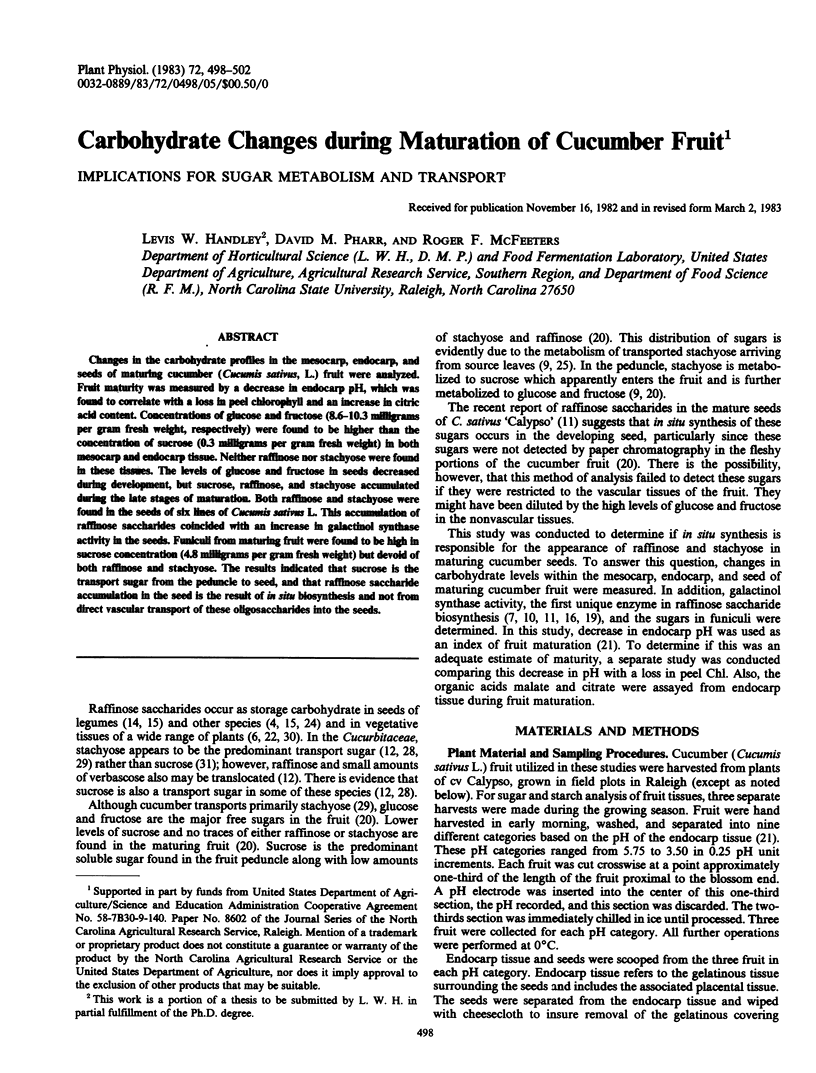
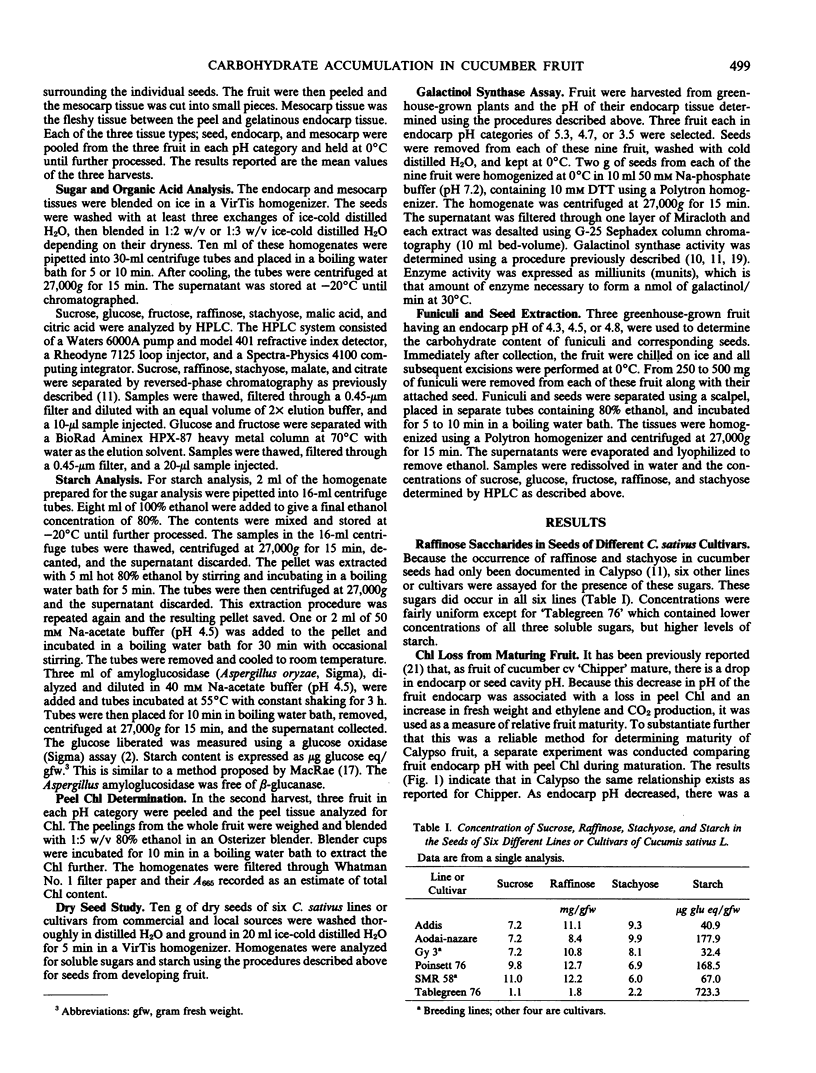
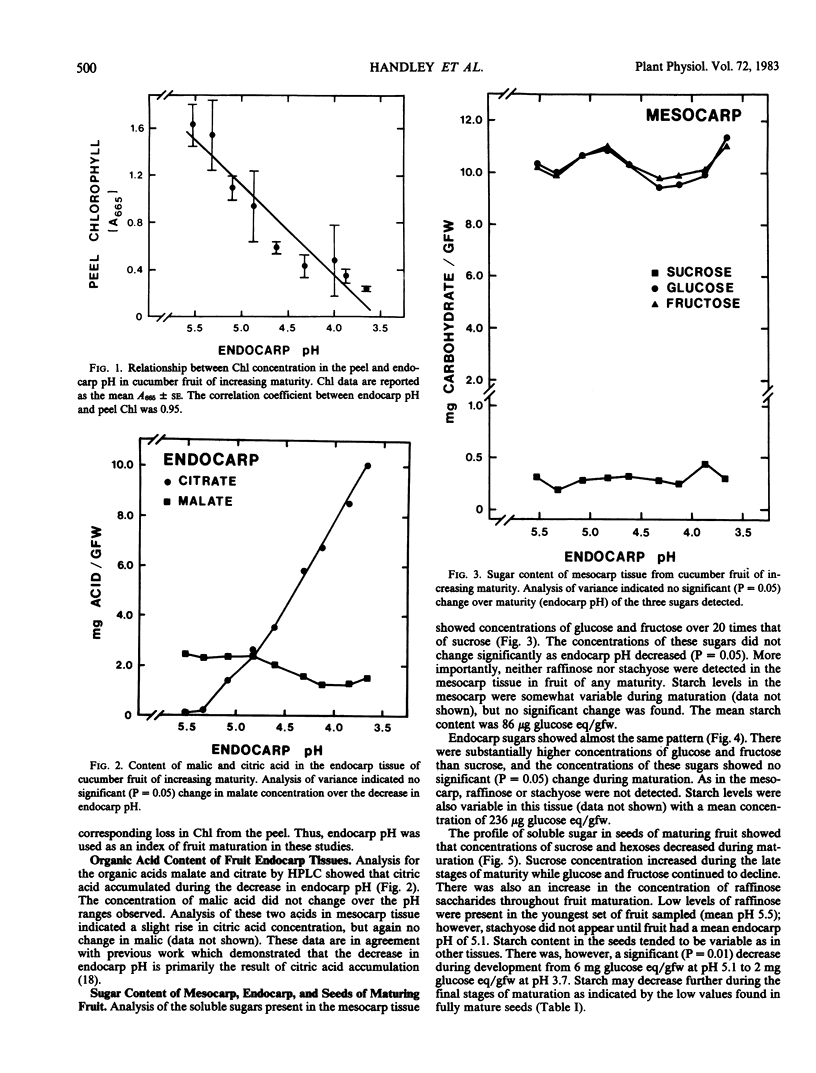
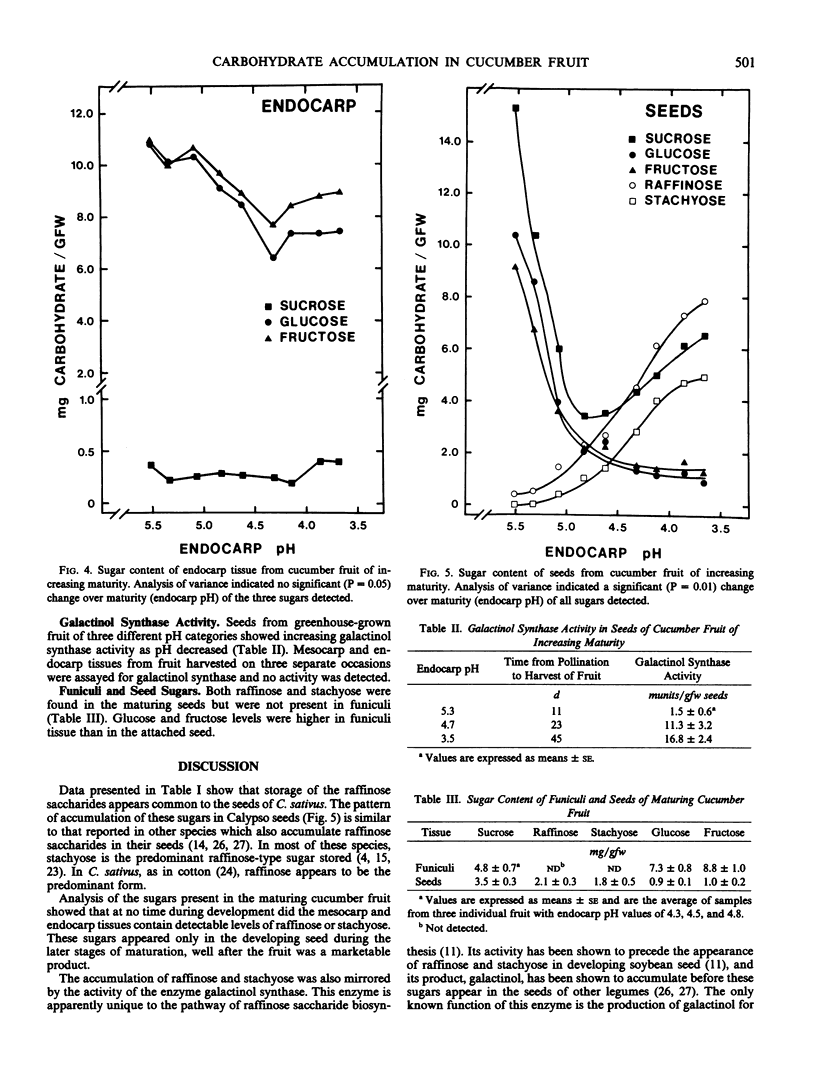
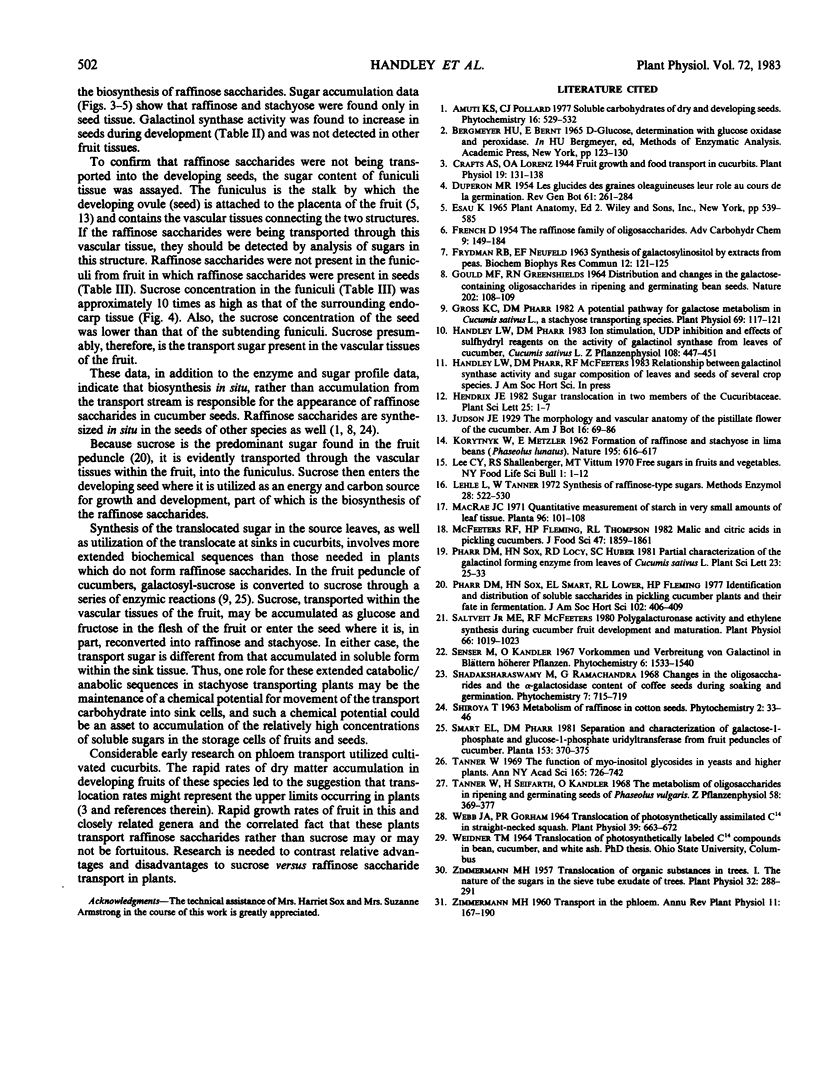
Selected References
These references are in PubMed. This may not be the complete list of references from this article.
- Crafts A. S., Lorenz O. A. FRUIT GROWTH AND FOOD TRANSPORT IN CUCURBITS. Plant Physiol. 1944 Jan;19(1):131–138. doi: 10.1104/pp.19.1.131. [DOI] [PMC free article] [PubMed] [Google Scholar]
- FRENCH D. The raffinose family of oligosaccharides. Adv Carbohydr Chem. 1954;9:149–184. doi: 10.1016/s0096-5332(08)60375-6. [DOI] [PubMed] [Google Scholar]
- FRYDMAN R. B., NEUFELD E. F. Synthesis of galactosylinositol by extracts from peas. Biochem Biophys Res Commun. 1963 Jul 18;12:121–125. doi: 10.1016/0006-291x(63)90246-8. [DOI] [PubMed] [Google Scholar]
- Gross K. C., Pharr D. M. A Potential Pathway for Galactose Metabolism in Cucumis sativus L., A Stachyose Transporting Species. Plant Physiol. 1982 Jan;69(1):117–121. doi: 10.1104/pp.69.1.117. [DOI] [PMC free article] [PubMed] [Google Scholar]
- Saltveit M. E., McFeeters R. F. Polygalacturonase Activity and Ethylene Synthesis during Cucumber Fruit Development and Maturation. Plant Physiol. 1980 Dec;66(6):1019–1023. doi: 10.1104/pp.66.6.1019. [DOI] [PMC free article] [PubMed] [Google Scholar]
- Zimmermann M. H. Translocation of Organic Substances in Trees. I. The Nature of the Sugars in the Sieve Tube Exudate of Trees. Plant Physiol. 1957 Jul;32(4):288–291. doi: 10.1104/pp.32.4.288. [DOI] [PMC free article] [PubMed] [Google Scholar]


